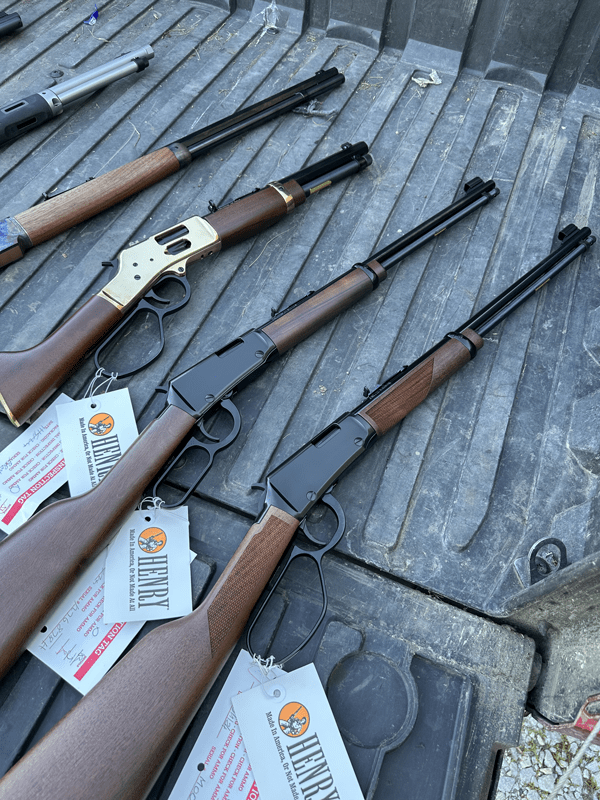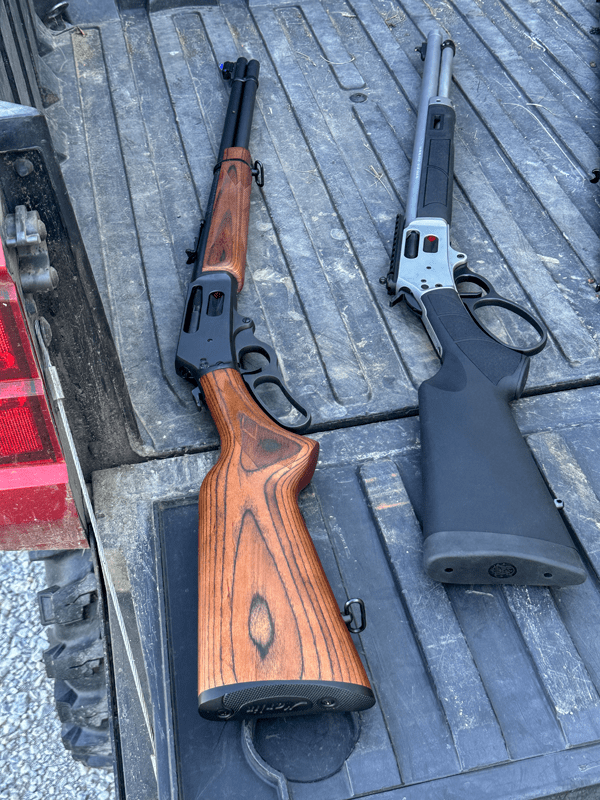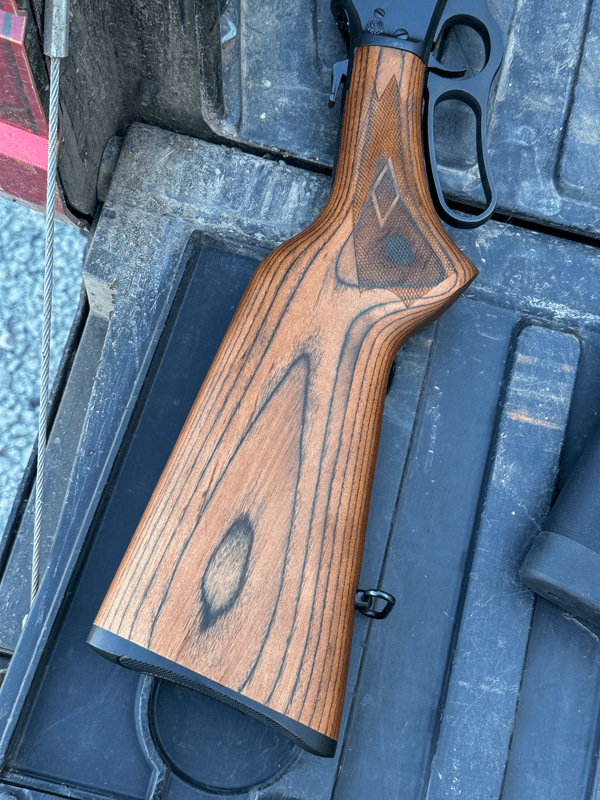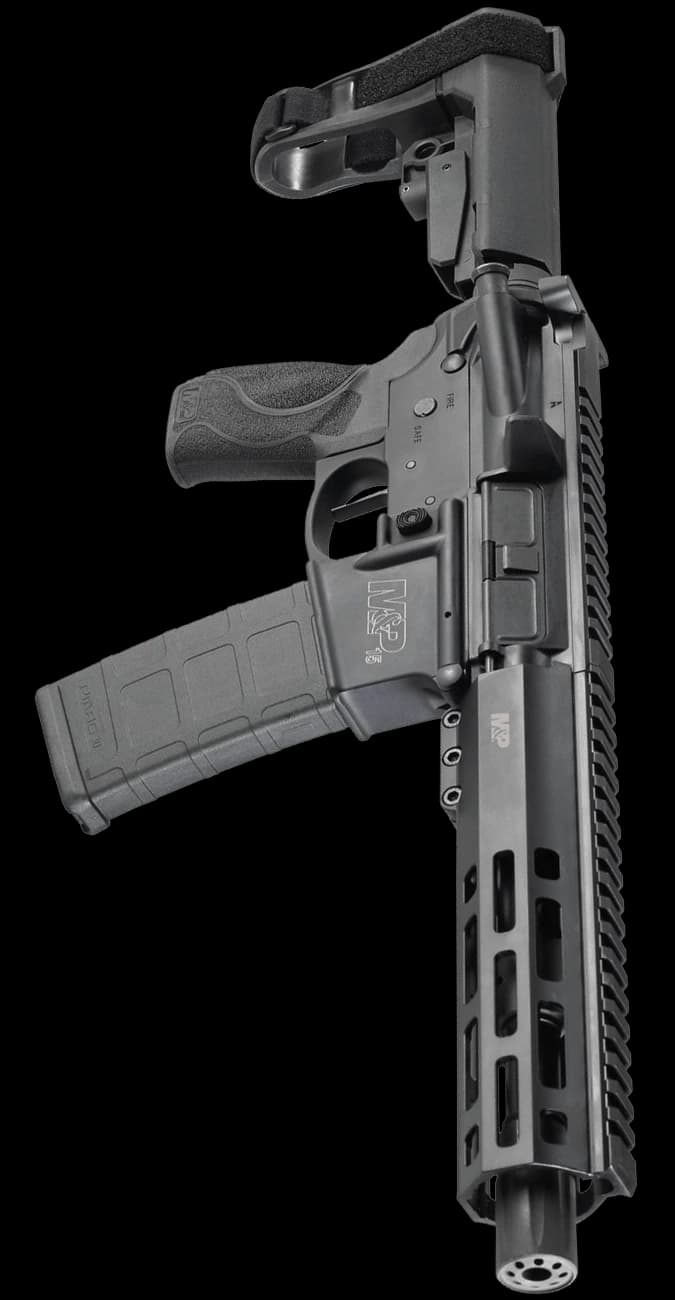Lever Action Rifle History and Modern Application

For all intents and purposes, the lever action rifle came onto the scene in 1860 with the introduction of Benjamin Tyler Henry’s Model 1860 rifle. The more nuanced history places the beginning of this design with a failed venture by Horace Smith & Daniel Wesson in 1854. Their design was purchased by Oliver Winchester, who also acquired Henry’s design in 1866. Winchester hired other talented arms designers who perfected the lever action rifle concept and they launched the first Winchester rifle: the Model 1866, also known as the “Yellow Boy.”

While the idea for and roots of the design of the lever action rifle is 170 years old, the concept is still going strong today with multiple companies making myriad models to suit shooters of all kinds.
Winchester
The name “Winchester” is synonymous with lever action rifles. Their iconic Model 1873 became known as “The Gun That Won the West,” and it is the gun that is most often conjured up in one’s mind’s eye when they think of the Wild West, lawmen, and outlaws alike.

After the Model 1873 and Model 1876, Winchester’s lever action rifle models came in quick succession from the mind of inventor John Moses Browning. He designed the Model 1886, Model 1892, Model 1894, and Model 1895.
With the exception of the Model 1876, you can still buy a brand new Model 1873, Model 1886, Model 1892, Model 1894 (now just called the Model 94), and Model 1895 from Winchester. While they bear the Winchester name, they’re no longer made in Connecticut. Instead, they’re made in Japan by Miroku, which has a long history of making high quality firearms.

A new addition to the Winchester lever action lineup is the Ranger, which is a brand new .22 LR rimfire model that was just launched at SHOT Show 2024.
Henry
While the original company founded by Benjamin Tyler Henry disappeared in 1866 when it was acquired by Oliver Winchester, the name lives on through the modern company known as Henry Repeating Arms. Best known for their promise, “Made in America, or Not Made At All,” if you want a top-notch lever action rifle made in the United States, this is the way to go.

Henry Repeating Arms offers a dizzying array of lever action rifles, from rimfire rifles for adults and children to centerfire rifles in a variety of calibers, including the iconic .30-30 and .45-70, as well as pistol calibers like .357 Magnum and .44 Magnum. Just as voluminous in variety as caliber is style. They’ve got gorgeous blued steel and walnut models, all weather models with satin hard chrome and stained hardwood, tactical versions (known as the X Model) with blued steel and synthetic furniture, engraved models, brass frames, color case hardened options, and so much more. There’s even a nod to Benjamin Tyler Henry with a faithful reproduction of his design, now called the New Original Henry.

If you can think up a configuration for a lever action rifle, there’s a very good chance that Henry Repeating Arms already offers it!
Marlin

There’s a long history of lever actions with Marlin, going back to their Model 1881 and Model 1891, the latter of which was a favorite of Annie Oakley. Today, however, they are best known for their Model 1894, Model 1895, and Model 336.

These models are further broken down into different series to appeal to different shooters’ needs. The SBL Series features polished stainless steel, gray laminate furniture, and a threaded barrel. The Dark Series has polymer furniture with M-LOK slots that brings a modern look to a classic design. The Classic Series is just that: classic blue and rich walnut. The Trapper Series is a short, compact design favored by anglers and hunters in the rough backcountry. Finally, the Guide Gun Series has a traditional look with a laminated, checkered stock that was designed to give a positive shooting grip no matter what the shooting conditions.

Ruger owns the Marlin brand, and the guns are proudly made here in the United States.
Plenty of Other Options
Even though the roots of the lever action rifle are firmly planted in the US, the design is one that transcends borders. There are also a lot of other companies making these guns in other countries.
GForce Arms imports their lever action models from Turkey.
Rossi makes and imports their rifles from Brazil.
Taylor’s and Company and Cimarron both import most of their models from Italy. In that same vein, Chiappa makes their own lever action rifles in Italy for import to the US.

Fun and Practical
Aside from being a ton of fun to own and shoot, lever action rifles have also become a great option for gun owners who live in restrictive places. States that have bans or restrictions on semi-automatic rifle features and magazine capacity can bypass much of that nonsense with a lever action rifle.
While you must always research and observe the laws in your given state, it’s possible that there’s a lever action rifle on the market that will allow you to have an adjustable buttstock, pistol grip, muzzle device, and magazine capacity greater than ten rounds all while still being legal - simply because it isn’t a semi-automatic rifle. Silly? Absolutely, but where there’s a will, there’s a way.
Work Those Levers!
Whether your goal is to challenge your inner Wild West gunslinger or to stick it to The Man in a restrictive state, there are plenty of reasons why a lever action rifle should be your next purchase. There are myriad options available, so there’s bound to be one that suits your needs.



